
Featured Blog | This community-written post highlights the best of what the game industry has to offer. Read more like it on the Game Developer Blogs.
5 W's (and 1 "H") for social media strategy noobs
There’s a million of these “Social Media 101″ blogs; this is a little longer than most, but hopefully gives a few more gaming start-up specific insights. Further reading and summaries at the end if you’re pushed for time.

TL;DR - Have fun with social media. You're a human talking to other humans, so act like it. Choose the platforms you use and the content you share carefully.
Social media hooziwatsits. Online marketing. Twittermajigs. Ain't nobody got time for that.
WHY do I need to use social media?
WHAT do I post?
WHERE do I have account?
WHEN do I post?
WHO should own the task?
HOW to make it manageable and effective
Unfortunately, you need to start making time. Social media is a basic necessity when running any type of business in 2014. It doesn’t matter if you are a huge multinational or a fledgling start-up (actually, it’s probably more important if you are a start-up).
Social media and social networks are the most cost-effective way of gaining company/brand/product traction and cultivating communication channels with your fans/consumers/players.
There are a HUGE amount of platforms for you to choose from. So many, in fact, that you need to be selective in which you choose to engage an audience on. Social media management and community management require so much thought and resources that many companies employ people dedicated to it.
Taking the time to devise a strategy, generate content, as well as grow and engage with a community is a hefty task. The days of setting up a Facebook account and posting a “Hello, world – today we are working” once a month is over. Social media is the forefront of your earliest marketing efforts, and demands as much time and consideration as you would put into a physical campaign (indeed, social media should now be integral to those types of that campaigns).
This post is written from our perspective, a small gaming start-up. Hopefully it covers enough tips that you can refer to when considering your own online image, without being overwhelming.
I won’t go into specifics of marketing strategy, SEO, ASO, keywords, hashtags, guerilla marketing, ‘going viral’ and such – this is a high level list of pointers for those embarking on setting up your company’s first social networks, with practical examples from our own strategies.
WHY? (LIKE, DUH)
Social media is the best way to reach an audience and tell them why you are such a BFD. This is pretty much a no-brainer of a question, but just to remind you what you of what you all know:
Build a community of early fans
NOTE – this will ONLY be your friends and family to begin with, and they will ONLY like your pages to be supportive. 50-100 Likes or Followers is not really that much of a measurable achievement (sorry, guys).
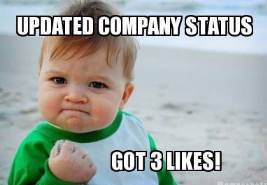
You might notice our own channels are a little light on Likes (that's fun to say/sad to read). If this blog is useful, help a brother out and click dem links on the right :)
Grow an audience for your product
Social networks are great hub for genuine fans of your product – they might come from an article you were mentioned in, a random blog post, or even one of your other social media channels. Have a flagship space for them to stay up to date.
Build buzz and interest
All of these friends, family and early fans add to that all important number of Total Fans. These kind of quantifiable numbers are what catch the interest of journalists and investors (and new fans).
Everyone has #FOMO, so the more genuine fans you have will build an exponential buzz around your brand.

Just because you HAVE a Facebook account, doesn't automagically mean people want to hear from you. Give your audience a reason to give an effing F by sharing good stuff.
Create communications channels
IS ANYBODY OUT THERE??? It’s all well and good putting lots of content out there, but the real value comes from others actively engaging with it, through Likes, Retweets, +1, Repins…
It is also the best place for a fan to ask you a direct question which is when the fun really begins. Do everything you can to encourage this behavior – be honest, be fun, and be QUICK!
Define company profile and values
Find, shape and use a voice that reflects your company values. Usually this will be your own voice, which is great. Use the opportunity of engaging with a Real Person to let them know you are Real People too – this helps shape company image, and lets the real world they aren’t talking to corporate robots.
For example, Chroma Studios is young(ish), funny and friendly, but also not one to shy away from a debate. Our core values revolve around creating great games, exciting characters, knowledge sharing and education, and having a lot of fun.
This is reflected in both the content we share, and the way we engage with others on social media.

Pro-tip: An ‘edgy’ post (or even a non-edgy one) can be great for visibility, debate and engagement, but some people literally can’t take a joke. There is such a thing as bad press #nice,guys #realnice. If unsure, sleep on it.

Pro-tip: Contrary to the above, if you are feeling sassy, go with it – being a bit #fierce can be great for your profile and entertaining for an audience, whether you are a run-of-the-mill, mundane mobile carrier, or a run-of-the-mill, mundane pop star.
BONUS, erm, BONUSES
Social media is great for increasing a teams profile both online and IRL – gaming is the new rock n’ roll, yknow! “Oh, you work at Chroma Studios?? That place looks so COOL!” )he optimistically stated).
Giving your team a voice is empowering, creative and FUN! Everyone on the team is encouraged to contribute to our news feeds.
WHAT (CONTENT)
If the point of being on social media is to engage with an audience, you must give them a reason to. This means that you should ONLY post what you feel will be interesting to them (not only to you, you egomaniac).
Understanding your audience is important and tricky, but you can take educated guesses based on a few factors.
EARLY STAGE
Your only fans are, I promise you, people you know personally. People you see every day who don’t really want to Like your page or Follow you, but will, because you’re buddies.
Don’t punish their nice gesture by posting things that interest just you or your industry – give them content they care about. If you know most of your audience personally, they probably know what you’re working on and what significant milestone you are trying to achieve.
Note, that “significant” does not mean “fixed compile error #whoot #goteamme”. It might mean getting a new team member, moving into a new office, passing a milestone or, of course, your first release. Allow them to celebrate the meaningful things with you!
And if you are in bug-fix mode, or you can’t think of anything interesting to say right now, diversify what you share. Funny images, interesting articles, cool music videos, team selfies – this is all click-worthy content which people would LIKE TO SEE. You don’t have to be 100% militant with how your ‘brand’ is being perceived when you share a cat picture just because; people will smile, and for the most part, they still know it’s you behind the posting at this stage.
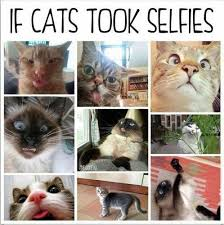
Pro-tip: People like pictures. And cats.
MID STAGE
When you start to know less and less people who are following you personally, it might be time to level up the focus in what you share.
People are probably interested in seeing news and updates, so drip feed more important product and company information into the feed over sharing third party content, like articles or your favorite games’ newest update.
It might also be time to review the ‘professionalism’ – there’s no harm in having fun (it should be encouraged), but ask yourself if the photos from the team party’s drunk dance-a-thon is really something you want to share with your community at this crucial stage (it might be, but ask yourself first). Watch the PG-13 language too.
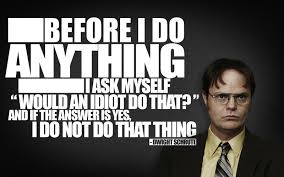
Pro-tip: Learn from others’ mistakes. 'Best' social media Fails of 2013.
BIG LEAGUES
Well, you’re on your own here. We have yet to reach the heady heights of million++ communities, but you can probably look to those who have for tips. From what I can sensibly extrapolate:
Product specific feeds. For example, “Jelly Splash” has an audience big enough that it has its own page, and is not filed under it’s company, “Wooga”.
Dedicated community managers and communications protocols. You can still retain a unique brand voice but you have a trained community manager behind them responding appropriately and quickly. Note that ‘appropriate’ does not mean ‘boring’.
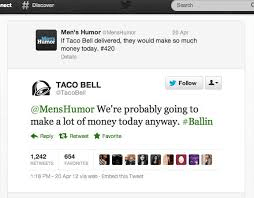
Pro-tip: Others might not be able to take a joke, but you do. The Internet is a harsh mistress sometimes; try not to take it too personally. #lookingatyou,philfish
No third party content. An audience this size Liked/Followed/Pinned your product because they love it – don’t dilute your communications with off-brand messages. It is confusing and a waste of opportunity. You wouldn’t buy a TV ad for a game, only to show off a link to your friends’ blog. Engage YOUR community with YOUR product. Get creative.
Embrace consistency across platforms. For the awww's.
WHERE
Chroma Studios is on a LOT of social platforms – this is to try and capitalize on the diverse platforms out there, all with different users.







Not all platforms support the same types on content, so think about what you have available to share, and which platform it is most appropriate to.
Of course, it helps a lot if you have a clear picture of your target demographic so you can focus your efforts on the platforms which matter to you.
You can find very pretty infographics (and more) which break down the user demographics for each platform, so I won’t recreate here, but identifying your most valuable platforms will allow you reach the widest audience with accessible and relatable content.
For example, Instagram is popular with teens and good for user-generated images – perfect for fun pictures of your team, conference appearances, guerilla marketing, surrounding areas. Instagram is not yet gaining a lot of traction for brands and products, though some companies are starting to dedicate time to populating pages with occasional content.
Facebook has less of a teen audience, but is still considered the ‘catch-all’ as a hub for brand information. Google+ is kinda sorta gaining traction (apparently) after Google recently changed several account management rules.
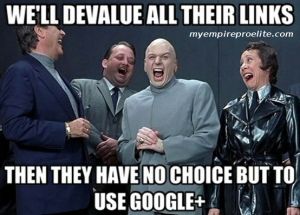
MySpace has a focused music-orientated audience; this isn’t in line with much of what we do, so we have chosen to postpone a MySpace account (for now).
Vine is – in my opinion – the best new social platform out there. It is hugely entertaining and the content is unbelievably creative. It might not be the best marketing platform, but you should be aware of it if you want to be down with kids (people still say that, right)? We will be on Vine as ‘funny and creative’ is part of our company ‘voice’.

Pro-tip: Engage with trends to stay current
Obviously, many of these platforms crossover. You can link a lot of platforms to post to one another, or use tools like HootSuite to manage multiple accounts.
However, not all content might be appropriate for that platform and/or it’s associated demographic; for example, it would be hard to get the kids on Vine to care about the cool curtains you pinned on Pinterest.
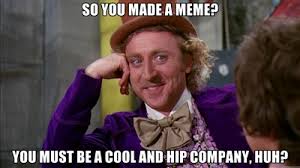
Pro-tip: If you’re unsure if your ‘kookiness’ is coming across as ‘adorable’ or ‘weird’, it’s weird.
You can, of course, put everything on your own website (if you feel it’s appropriate to do so). So choose what to post - and where – carefully.
WHEN
There are no hard and fast rules for how much and when you should try to engage an audience (well, actually, there are some) (actually, a lot). But these are just suggestions – find out what works for you and your audience by running some tests and trying different things.
Most platforms have page owners’ analytics/dashboards that help you identify your most effective content. Evaluate and optimize.

Whilst some Facebook rules will reduce your reach (unless you are willing to pay to promote a share), a general rule is not to over-post. Over-posting of ‘low quality’ (read: boring) content will have even your loyal friends and family reaching for the “Hide All By…” buttons.
WHO
Social media management/community management can be a full time job. Presumably, most small companies cannot afford to dedicate someone to this task at early stages, so it usually falls to someone doubling up on tasks, which then makes it a chore and generally takes the fun out the exercise.
We try to find ways to share the role of social media management – every team member is an admin and can post to any of our accounts. It keeps things fresh and interesting, and everyone feels like they contribute to the company profile – this is a great thing for a young company like ours.
I also plan to implement a fun little competition where the person on the team who posts the most engaged Tweet/Share/image each week wins a goofy little prize.

Pro-tip: Asking everyone to contribute content expands your ‘personal’ network of fans, lightens the work load for your one dedicated social media person, and diversifies your content. You might even have a friends’ company do a ‘takeover’ for a day or two – make each other admins and promote your own games to each other’s networks!
Do everything you can to make sure that your public image is one of a fun and interesting group of people. The best way to do that is to be like that IRL. And if you’re not the office clown, particularly friendly, or intrinsically unlikeable, you should probably hand over the reins to a more outgoing person in the studio.
HOW
SET GOALS
It’s hard to define whether or not you are #winning at social media. I suggest setting some goals to help you keep an eye on how effective your campaigns are. Some basic examples could be:
“1,000 Tweets”
“200 Twitter Followers”
“500 Likes on Facebook page in 3 months”
“100 views on YouTube”
“Klout score of 40+”
*Scale numbers to suit, of course.
MANAGE EFFORTS
There are several toolsto help you manage and optimize your social media activities.
Platform specific dashboards (you can break down how engaging every share, Like, comment was)
Google Analytics (free for websites and easy to integrate)
Link tracking tools such as LinkFire
Klout will create an aggregate score for how ‘big’ your online voice is based on all your social media activities (a useful benchmarking tool)
Hoot Suite allows you to manage several accounts on different platforms, including the ability to schedule posts per account
Use embedded buttons and hotlinks to allow your content to be shared across other networks
Connect apps to one another (pro-tip: set up a chain rather than linking everything to everything. The latter results in lots of annoying double-posts).

Pro-tip: Don’t over-post. It’s not that hard to unfollow someone who is spamming your news feed. Accidental double-/triple-/insano-posting does not help.
STRATEGIZE
Along with your goals, map out a social media strategy. This should feed directly into your 'real' marketing strategies when the time comes.
Ours, as we start out, is to identify and create accounts for every platform that might have a unique audience which might interested in our games/company, which we could not reach with targeted content on other platforms without diluting our brand message on those other platforms. #catchy,huh
We want to appeal to a games audience, sure, so we have our ‘games company’ page on Facebook. But as our game targeted to a family demographic we are aware that moms and dads might not be interested in subscribing to such a Facebook page. They might be interested in Pinning something on Pinterest, or engaging with us on LinkedIn, Twitter or Google+. We don’t know, so we’re going to try it out. Certainly many social networks are synonymous with a particular demographic or user group.

In this regard, our current strategy is ambitious, and perhaps a little premature. But we will measure and evaluate the ‘performance’ of each platform over time and see if it is working in the way we want it to.
If we feel we are achieving our goals, great – we set new, more ambitious goals. If we are not hitting our targets we will change our posting strategy (probably frequency and/or content type) for that platform, or temporarily close the account until we can give it the attention it deserves.
Something similar might work for you – maybe you want to try something else completely different. If you’re unsure of a starting point, get on AT LEAST Facebook, and take it from there. Be aware, however, that putting all your eggs in the Facebook basket can be disastrous for a product if they suddenly change the rules for visibility.
Which they can. And do.
So when you can, mix it up. You cannot hinge your entire marketing strategy – or, indeed, your entire COMPANY strategy – on how a single platform operates on any given day. Well, you can – you don’t want to, though.
SUMMARY AND FURTHER RESOURCES
Know your audience, and which social media platforms they are active on. Target those (first).
Post what is interesting to your audience, not just to you. The weather might be literally more interesting than what you are working on. Even weather not even near you. #damnnatureyouscary
Customize content per platform if you can
Use tools and cross-post (when appropriate)to minimize the amount of effort required
Do be entertaining/interesting/funny/concerned/yourself/human
Don’t be a (total) dick/don’t come across as a dick
Set goals, measure, evaluate, adapt periodically
Make it easy to share and engage with your other platforms by using embedded buttons, hotlinks and sign-offs
Ask questions, listen to answers, respond
Ask for Retweets (and SPELL “Retweets” – not “RT”)
Ride trends to stay current
I’ve just touched on what online marketing and social media management entails. Hopefully it has been a helpful introduction.
As social media management and marketing becomes an increasingly specialized role, there is a wealth of further reading for you to dig into. Here are some interesting sites, blogs and boards to get you started on the next step.
“Get (the right kind of) attention on social media” @RockPocketGames
40billion - follow on Twitter for A LOT of shared links
"How not to be a dick on the Internet" General life advice from Buzzfeed
Good luck!
Tim
Do you have any useful links to share? Agree or disagree with anything I've said? Please let me know in the comments.
Read more about:
Featured BlogsAbout the Author(s)
You May Also Like









